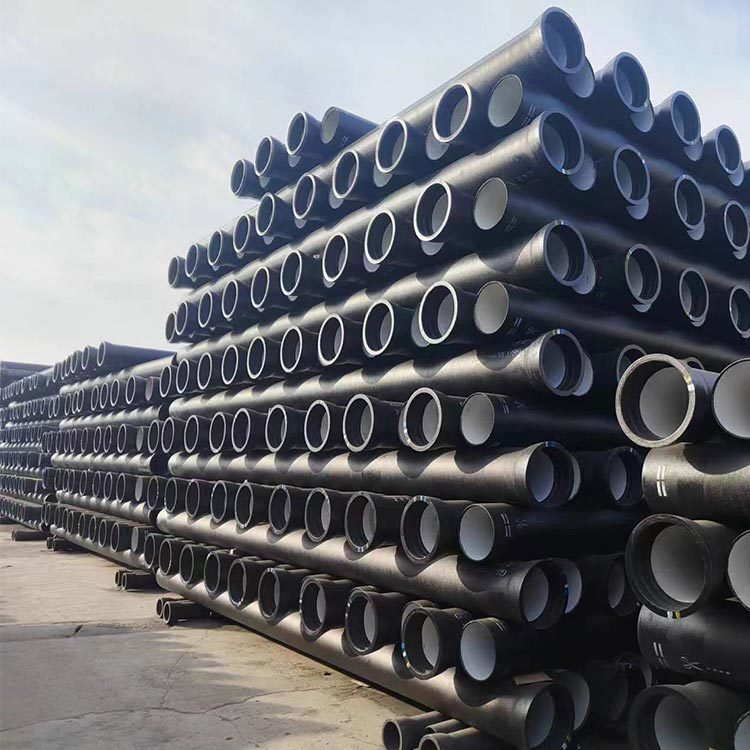Ductile Iron Pipe Dimensions: A Comprehensive Guide to Sizes, Standards & Applications provides an in-depth look at the critical measurements and quality benchmarks that define ductile iron pipes.we explain the key dimensions—from nominal diameter to wall thickness—and explore the industry standards and practical applications that ensure these pipes meet rigorous performance and safety requirements. Understanding ductile iron pipe dimensions is critical for ensuring proper installation, performance, and compliance with international standards. This guide covers everything you need to know about DIP sizes, specifications, and selection criteria.

What Are Ductile Iron Pipes?
Ductile iron is a type of cast iron known for its improved strength and flexibility compared to traditional gray iron. These pipes are manufactured using ductile iron to provide a longer service life, reliable performance, and resistance to corrosion. Their dimensions are specified in terms of diameter, wall thickness, weight, and pressure ratings which ensure they meet the standards required for safe and efficient transportation of water and other fluids.
Key Standards for Ductile Iron Pipe Dimensions
Ductile iron pipes follow globally recognized standards to guarantee quality and interoperability:
-
- ANSI/AWWA C151/A21.51 (U.S. standards)
- ISO 2531 (International standards)
- EN 545/EN 598 (European standards)
These standards define parameters like nominal diameter (DN), wall thickness, pressure ratings, and lengths.
Ductile Iron Pipe Dimensions: Key Specifications
1. Nominal Diameter (DN)
Ductile iron pipes are categorized by their nominal diameter (DN), which corresponds to their internal bore size. Common diameters range from DN 80 (3 inches) to DN 2600 (104 inches).
2. Pressure Classes
Pressure ratings determine a pipe’s ability to withstand internal and external loads. Standard classes include:
- Class 50 (Low pressure)
- Class 150 (Medium pressure)
- Class 300 (High pressure)
3. Wall Thickness
Wall thickness varies based on diameter and pressure class. Thicker walls enhance durability for high-pressure applications.
Ductile Iron Pipe Dimensions Table (ANSI/AWWA Standards)
| Nominal Diameter (DN) | Outside Diameter (mm/in) | Wall Thickness (mm/in) | Pressure Class |
|---|---|---|---|
| DN 100 (4″) | 118 mm / 4.65″ | 6.0 mm / 0.24″ | Class 150 |
| DN 200 (8″) | 220 mm / 8.66″ | 7.2 mm / 0.28″ | Class 150 |
| DN 300 (12″) | 323 mm / 12.72″ | 8.6 mm / 0.34″ | Class 300 |
| DN 600 (24″) | 635 mm / 25.00″ | 12.5 mm / 0.49″ | Class 300 |
Note: Dimensions may vary slightly by manufacturer and regional standards.
How to Choose the Right Ductile Iron Pipe Size
Selecting the correct ductile iron pipe dimensions depends on:
- Flow Requirements: Larger diameters accommodate higher water volumes.
- Pressure Needs: Match pressure class to system demands (e.g., Class 300 for high-pressure mains).
- Soil Conditions: Thicker-walled pipes are ideal for unstable or corrosive soils.
- Installation Type: Trenchless installations may require specific dimensions.
Why Ductile Iron Pipes Outperform Alternatives
Compared to PVC or steel pipes, ductile iron offers:
- Longer Lifespan: 100+ years with proper coatings.
- Higher Burst Pressure: Up to 350 psi for critical applications.
- Flexibility: Resists damage from ground movement.
FAQs About Ductile Iron Pipe Dimensions
Q: What is the standard length of ductile iron pipes?
A: Most pipes come in 6-meter (19.7-foot) sections, but custom lengths are available.
Q: Are ductile iron pipe dimensions compatible with PVC fittings?
A: No—use only DIP-specific fittings to ensure leak-free joints.
Q: How do I convert DN sizes to inches?
A: DN 100 ≈ 4 inches; DN 150 ≈ 6 inches (exact conversions depend on standards).
Optimize Your Project with Accurate Ductile Iron Pipe Sizes
Choosing the correct ductile iron pipe dimensions ensures system efficiency, longevity, and compliance. Always consult manufacturer datasheets and adhere to ANSI, ISO, or EN standards for your region. For large-scale projects, work with certified suppliers to verify specifications and pressure ratings.
By prioritizing accurate dimensions and pressure classes, you’ll minimize maintenance costs and maximize ROI for water, sewage, or industrial systems.
You can download the PDF of the Ductile Iron Pipe Dimensions and sizes.

